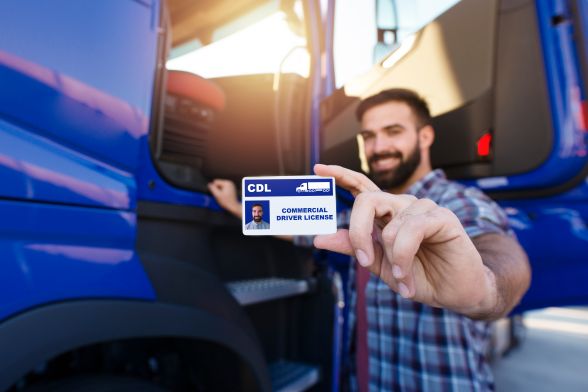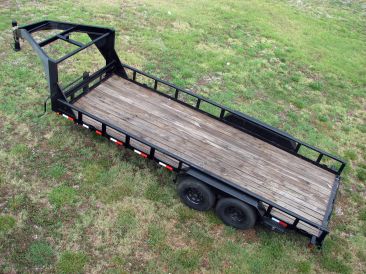
Review engine, brake issues, error codes and more with a Mechanic Online in just minutes.
Connect with a verified mechanic in minutes. No appointments. No high fees. No waiting. Get back on the road and enjoy the ride.
What is a Gooseneck Trailer?
A gooseneck trailer is a towing trailer used to haul large equipment and materials. The word “gooseneck” comes from the appearance of the trailer, as it resembles an animal gooseneck due to the way it joins to the truck.
There are many reasons why you might want to use a gooseneck pendant. For one thing, gooseneck trailers carry much more cargo than traditional utility trailers, making them convenient to tow with a pickup truck. Some gooseneck trailers can even carry over 40,000 pounds.
Many business owners, especially in the landscaping industry, use gooseneck tags for business purposes. You don’t need a commercial truck to transport your equipment. Utility trailers usually do not work due to their size and lifting capacity.
Gooseneck trailers have many unique features. Specifically, the gooseneck has a hitch that arches over the truck’s tailgate and allows you to connect the truck’s bed. Almost all gooseneck trailers are double tandems.
This means it has two double axles, ensuring a smooth and safe ride for both transporter and driver. But, depending on the trailer brand and retailer, gooseneck trailers may have unique features.
Connect with a verified mechanic in minutes. No appointments. No high fees. No waiting. Get back on the road and enjoy the ride.
Gooseneck trailers use a Class V hitch and are recognizable by their superior features unique to this type of trailer.
Trailers use a long, curved neck that connects to a tow vehicle, while other trailers have a simple hitch.
One of the main advantages of gooseneck trailers is their stability. The trailer is very stable as the hitch is connected to the tow vehicle. The weight of the trailer is concentrated on the rear axle of the lead car, not on the bumper. This weight distribution results in a smoother ride.
Its high stability makes it easier to drive on highways and public roads. Additionally, the weight distribution makes it easier to tow heavier loads. Unfortunately, gooseneck trailers have to be towed behind an SUV or RV. If you don’t own a truck, a trailer may be useless.
What are the Laws for Gooseneck Trailer?
There is a reason for the Department of Transportation (DOT) regulations on gooseneck trailers. These laws are essential to facilitate the safe transportation of concrete pipes, shipping containers, and other forms of heavy cargo.
Compliance inspections can be conducted at any time to identify areas that need improvement to increase compliance among drivers.
DOT regulations apply to tow trailers when gross vehicle weight (GCWR) exceeds 10,000 lbs.
Do I Need a CDL to Pull a Gooseneck Trailer?

A commercial driver’s license (CDL) is required to tow a gooseneck trailer.
Federal requirements include a CDL license for gross weight vehicles with a GVWR greater than 26,000 lbs, as long as the tow vehicle’s GCWR exceeds 10,000 lbs. Most gooseneck pendants fall into this category.
There are different types of CDL classifications. CDL licenses are classified based on vehicle type, specific purpose, and gross vehicle weight rating. Here are three different classifications.
A Class A CDL classification means that the driver can drive a tow route with a gross vehicle weight rating of 26,000 pounds or more and the weight of the vehicle being towed exceeds 10,000 pounds.
A Class B CDL license allows him to drive a vehicle with a trailer whose gross vehicle weight rating does not exceed 10,000 pounds. A driver can also drive a commercial vehicle (CMV) that weighs over 26,000 pounds.
Category C driving licenses include large passenger vehicles and other vehicles carrying dangerous goods. Drivers must have this license when driving a vehicle with 16 or more passengers (including the driver).
What is the Most You Can Tow without a CDL?
A driver cannot tow a vehicle without a CDL license unless the vehicle has a gross weight rating of 26,000 or less. I need to get a CDL so I can tow anything costing over 26,000 pounds.
Trailers with a gross vehicle weight of 26,000 or less can be driven without a CDL. Therefore, the combined weight of trailer and truck should not exceed 26,000 lbs.
Before checking the trailer length, make sure the combined trailer and truck weight does not exceed 26,000 lbs. The maximum length of the trailer is 53 feet.
How Can We Pull a Gooseneck Trailer?
The first thing you need to do is load the trailer into place. Make sure your truck is equipped with the proper gooseneck prep pack. Next, attach the bullet safety chain and trailer wiring.
After connecting the trailer to the towing vehicle, make sure it is securely and correctly attached. Make sure the inside of the trailer is properly loaded as any slight movement of the trailer will affect the movement of the truck while driving.
The first time you tow a gooseneck trailer, you may need to take a few short trips in light traffic to get used to the raised edges of the vehicle. Ideally, practice driving before going on a long drive. Make sure you are familiar with turning radius and other important factors.
In general, large trucks should perform best when towing a gooseneck trailer.
Federal regulations dictate that Class A CDLs are required for several vehicles with a gross vehicle weight of 26,000 pounds or more because trailer gross vehicle weight exceeds 10,000 pounds.
Safety is paramount when towing a gooseneck trailer. Make sure you are using the correct vehicle to tow the trailer. The ideal vehicle includes a well-equipped, powerful pickup that uses a trailer hitch.
A semi can tow a gooseneck trailer if the 5th wheel plate and gooseneck kingpin are correctly positioned at the correct height.
On average, a 40 foot gooseneck trailer weighs about 9,000 pounds. So the GVWR is around 26,000 pounds. A 40 foot trailer has a load capacity of approximately 10,000 pounds. A truck can carry about 10,000 pounds of cargo or goods.
The gooseneck trailer is big and you can see the GVWR over his 10,000 lbs. This requires a GCWR setup of over 26,000 pounds.
Max Anthony
Max is a gizmo-savvy guy, who has a tendency to get pulled into the nitty gritty details of technology and cars. He attended UT Austin, where he studied Information Science. He’s married and has three kids, one dog and a GMC truck and a Porsche 911. With a large family, he still finds time to share tips and tricks on cars, trucks and more.
Review engine, brake issues, error codes and more with a Mechanic Online in just minutes.
Ask a Mechanic Live Now


